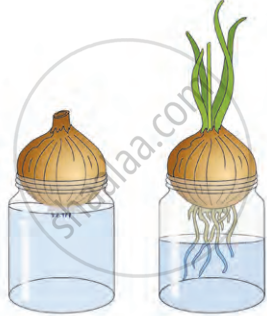1. Aim: To observe and differentiate between taproots and fibrous roots in plants.
2. Requirements
- Earthen pot
- Water, Large conical flask
- Seeds of plants like mustard, sorghum (jowar), maize (corn), pea, coriander, etc.
3. Procedure
- Sow seeds of mustard, sorghum, maize, pea, coriander, or other plants in an earthen pot with soil.
- Water the seeds and allow them to grow for eight days until the plants reach a height of about 15 to 20 cm.
- Uproot the plants carefully when the soil is moist, ensuring the roots remain undamaged.
- Gently place the uprooted plants in a large conical flask filled with water. The soil will wash off, leaving the roots visible.
- Observe the roots to see whether they are taproots or fibrous roots.
4. Observation
- Taproots: Plants like peas and mustard will have a single, thick primary root with smaller side roots.
- Fibrous roots: Plants like maize and sorghum will have thin, hair-like roots growing from the base of the stem.
Conclusion: This experiment helps identify two types of root systems.
- Taproots (seen in peas and mustard) have one main root.
- Fibrous roots (seen in maize and sorghum) have many thin roots spreading out from the base of the plant.


